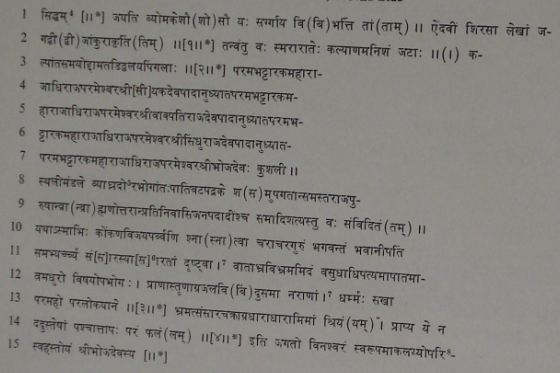|
The Indian Analyst
|
North Indian Inscriptions |
INSCRIPTIONS OF THE PARAMARAS OF MALWA BĀNSWĀḌĀ COPPER-PLATE INSCRIPTION OF BHOJADEVA Arthūṇā, which was in important centre under the Paramāras and which, with the hamlet Thalī, was then one and the same place. Vyāghradōra,[1] mantioned in the same line as a bhōga, appears to me the modern Bāgidōrā, the head-quarters of tehsīl in the Bāṅswāḍā District, about 45 kms. due south-west of it and at almost the same distance north-west of Thalī. Vaṭapadraka where the land was donated is probably the modern village of Barōdiyā, situated about 10 kms. north of Bāgiḍōrā or another village of the name of Barliyā which lies about double the distance to the south-west of Bāgidōrā.[2] And finally, Chhiñchhā, from where the donee’s ancestors had emigrat- ed (1.18) is the modern big village of the name of Chheench, lying about 10 kms. straight north of Bāgidōrā.
TEXT[3]
Second Plate ; First Plate
[1] For the reading of the name, see n. in the text.
|
||||||||||||||||||||||||||||||||||||||||||||||||||||||||||||||||||||||||||||||||||||
| > |
|
>
|









